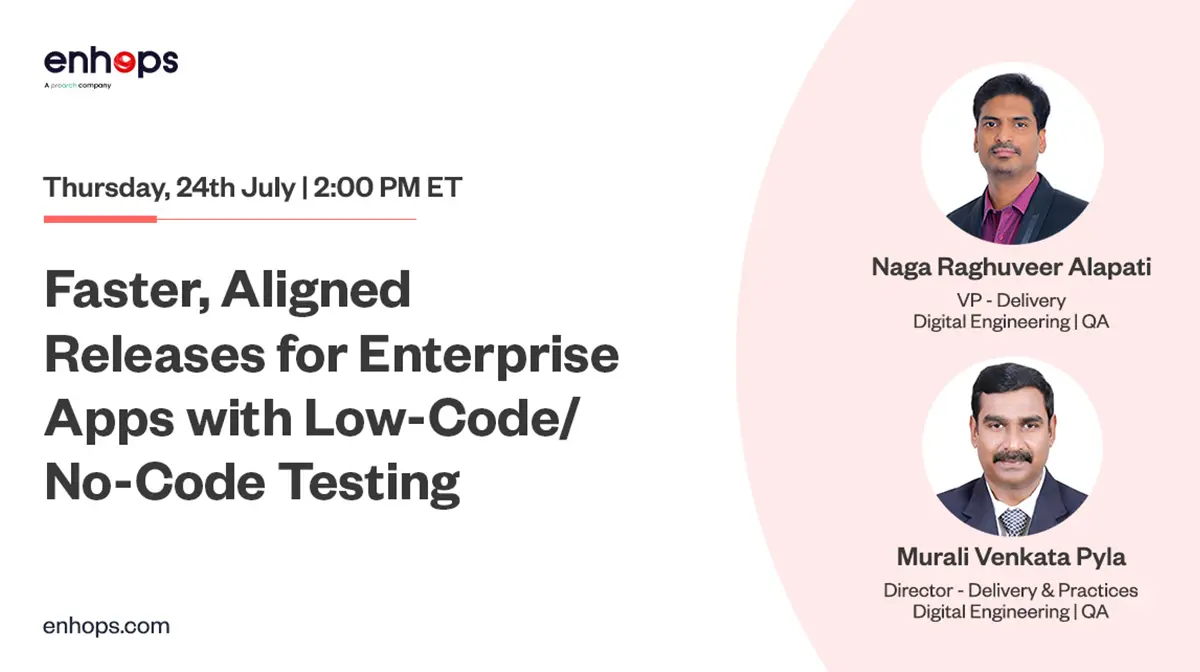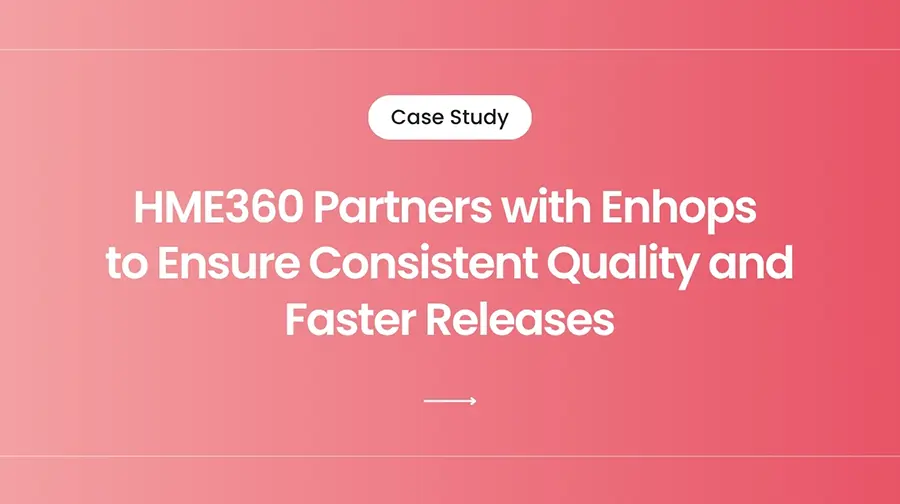We are already living in a digital world, which is moving swiftly in this new virtual reality. With this, enterprises are looking for ways to build applications and architecture that can evolve with changing customer experience.
To achieve this agility, tech leaders are looking for ways like serverless architecture, data-driven applications, microservices, serverless architectures, hyper automation, and more.
Amongst all this, the one thing that is constant is data. Whatever applications and systems are being built, enterprises require systems that can help in achieving scale in processing, communications, storing, and provide real-time data insights. This must be further combined with easy to maintain application architectures.
This is where Microservices (a new way of building applications) and Apache Kafka (a distributed streaming platform) come in. They are already helping many organizations to build fault-tolerant application architectures. The innate ability of Microservices to decouple huge applications into small and manageable services makes it highly popular. However, microservices’ communication usually tends to get more complex because of their distributed nature.
As microservices combine various services and sub-services, the communication between these services must be highly intact, otherwise resulting in application collapse. The independently dependent services communicate with each other using light weight protocols like REST or messaging broker systems like Apache Kafka. Kafka is a distributed streaming platform that is becoming increasingly popular for building microservices applications.
Want to Build and Manage High Performance
Data-Driven Architectures
In this blog, we’ll explore how to build fault-tolerant microservices architecture using Kafka, including:
- What makes Kafka ideal for microservices
- Kafka implementation approaches
- Best practices for fault-tolerant design
- Common challenges and how to overcome them
Why Fault Tolerance Matters in Microservices
Microservices architecture breaks large monolithic applications into smaller, independent services. While this design offers flexibility and scalability, it also introduces complexity in communication. If one service fails, the entire system can be affected — unless fault tolerance is built in.
Fault-tolerant microservices ensure that:
- Failures in one service don’t bring down the whole application
- Messages aren’t lost during outages
- Recovery and scaling happen automatically
Kafka plays a central role in achieving this reliability through asynchronous communication, data replication, and persistent message storage.
What is Apache Kafka and Why It’s Ideal for Microservices
Apache Kafka, originally developed by LinkedIn, and now open sourced. Apache Kafka is a distributed streaming and messaging platform. It goes well with the data intensive applications and services that require constant messaging support from each other. It can publish, subscribe, store, and process streams of records in real time – making it ideal for modern microservices communication.
Key Features of Apache Kafka for Fault Tolerance
- Distributed Architecture – Kafka is the first choice for building fault-tolerant and scalable applications because of its highly distributed architecture. At any given point in time, Kafka can scale horizontally across multiple servers, giving it the ability to handle large volumes of data even in real-time production environments.
- High-throughput Messaging – The distributed architecture makes Kafka highly scalable and flexible to handle high-throughput messaging. It can handle volumes of data coming from multiple servers, services, or other work modules. Kafka also has a messaging persistence nature which allows messages to be stored and consumed later.
- Stream Processing – Kafka can process multiple (zillions) streams of data in real-time while handling the processing, storage, subscribe, and publishing them. Kafka streams can be processed using various programming languages and frameworks, including Java, Scala, and Python.
- Connectors and Integrations – Kafka has built a good ecosystem of connectors and integrations with tools like Elasticsearch, Hadoop, and Spark allowing easy integrations with data pipelines, warehouses, and tools.
- Security and Authentication – Kafka provides security features like SSL/TLS encryption, authentication, and authorization. By extending its integration with LDAP and Kerberos, Kafka is also providing support with external authentication providers.
What are Microservices and why are they highly popular?
Microservices are small, independent services that together make up an application. Each service is responsible for a specific functionality — improving scalability, agility, and maintainability.
Key Benefits of Microservices
-
- Highly Scalable – Microservices runs on cloud. It can also be developed and managed on in-house data centers and private servers. But cloud’s ability to scale resources up and down gives microservices its magic of scaling up and down services based on their requirements. During peak times, when services require more resources to run efficiently, more capacity can be added without any lag. Similarly, during non-peak times, if the resources are lying idle, they can be scaled down to save costs.
- Faster Resolution of Issues – In contrast to monolithic architectures, where a single bug can cause the entire system to fail, microservices are fault-tolerant by nature. It is possible for each of them to be deployed independently and to function independently. During any issues, specific services can be restored by working on them. As a result, issues can be resolved more quickly since they are isolated and can be addressed without affecting other systems.
- Easy Deployments – Microservices are easy to deploy because of their independent nature. Each service can be handled in singularity and hence it doesn’t affect other application modules. With practices like CI- CD pipelines and Infrastructure as Code, the ability to provision new resources, reduce maintenance, scale up and down easily, and deliver new features, resolve issues, get easy.
- Resilience and Reusability – Microservices promote reusability because of robust communication systems between services. Instead of building services every time, developers can reuse existing services for various functionalities. This also promotes a lot of interoperability.
- Improved Collaboration – Microservices promote collaboration between developers and cross-functional teams. Microservices are also easy to understand for non-technical users as each service is dedicated to one application functionality. This helps in bringing in more collaboration and decrease size of feedback loops in the application architecture.
How Kafka Enables Communication Between Microservices
Kafka ensures fault-tolerant, asynchronous communication between distributed microservices through event streaming. Let’s explore the common implementation patterns.
1. Kafka as a Messaging Layer
Microservices directly integrate Kafka client libraries to send and receive messages. This allows for fine control but introduces tighter coupling.
2. Kafka as an Event Bus
Kafka acts as a publisher-subscriber event bus, where microservices publish events and others consume based on their subscriptions. This approach offers loose coupling and better scalability.
3. Kafka as a Service Mesh
Kafka can serve as a service mesh layer — routing communication between services. This creates a seamlessly connected, event-driven microservices ecosystem that remains operational even when some services are slow or temporarily unavailable.
Best Practices for Implementing Kafka to build Fault-Tolerant Microservices
Implementing and managing Kafka can be a daunting task but taking care of few best practices can help in using Kafka as a point of success in your Microservices architecture. Here are some of the best practices for implementing Kafka in Microservices architecture –
-
- Use a Kafka cluster for fault intolerance – A Kafka cluster consists of multiple brokers who can host one or more partitions. It is highly recommended to replicate data across multiple brokers so that the data is not lost in case of broker failure. It also helps in creating multiple datasets and validating the entries whenever required.
- Use service mesh integration, wherever possible – In microservices architecture, use asynchronous communication between services by using Kafka as a service mesh intercept. This helps in establishing seamless communication between two microservices. This allows services to use publish-subscribe feature of the Kafka messaging system and microservices can continue to interact with each other without knowing the origin and consumption of messages. Even if the services become slow or unavailable, Kafka can act as a messaging layer to keep the communication intact, till the time services are restored.
- Use Kafka idempotent producers – While using Kafka messaging layer, it is important to ensure that multiple messages are not hitting services. Kafka provides at-least-once message delivery semantics, that ensures that messages are not lost or duplicated. If the messages are duplicates in some cases, idempotent producers make sure only one message is delivered and other remain unsent.
- Use a partitioning strategy – Kafka distributes data across multiple brokers. Sometimes, this leads to uneven distribution of data leading to non-uniform messaging. Make sure that you work with experts like Enhops who has built and managed multiple Kafka architectures and instance to create a good partitioning strategy.
- Use a consumer group – In a microservices architecture, multiple services consume messages from the same topic. A consumer group ensures that messages are not duplicated and hey work together to obtain messages from a topic. Each consumer in a consumer group is assigned one or more partitions to consume messages from.
- Implement a dead-letter topic – In a microservices architecture, services can break sometimes or fail to communicate with each other. Using a dead-letter topic makes sure that messages are not lost and are stored in dead-letter topic. Failed messages can be analysed later and processed.
- Use a circuit breaker pattern – Whenever services break or become unavailable in microservices, it is important to ensure that these failures doesn’t trickle down to all messaging layers and services. Hence, it is important to introduce a circuit breaker pattern that prevents a service from continuously trying to call another service that is failing. Instead, the circuit breaker returns a fallback response or takes other action to prevent a cascading failure.
- Use monitoring and alerting – In a microservices architecture, it is important to monitor the health of services and the Kafka cluster. This allows for proactive management and can prevent failures before they occur. It is also important to set up alerting for critical events, such as broker failures or service outages. Managing Kafka 24 by 7 can help in preventing outages and services failures. Usually, it is highly advisable to build a Kafka managed services center and if you don’t have one, consider outsourcing it.
Our Kafka Managed Service Engineers provide round the clock support for Kafka to report real-time anomalies and provide fast resolution. Our no gimmick and clear cut pricing plans help our client’s make informed decisions and maintain their Kafka instances within budget.
Common Challenges and How to Overcome Them
Even with best practices, Kafka microservices implementations can face issues. Here are some common challenges and solutions:
| Challenge | Solution |
|---|---|
| Duplicate messages | Use idempotent producers and unique message keys |
| Schema evolution conflicts | Adopt schema registry for backward compatibility |
| Data consistency | Use distributed transactions or outbox patterns |
| Consumer lag | Monitor consumer offsets and rebalance partitions |
| Message ordering | Use partition keys to maintain sequence consistency |
Build a Reliable Kafka-Based Architecture with Enhops
Building a fault-tolerant microservices architecture using Kafka is not a straight-line and there’s no fixed recipe for the same. It depends on application usage and business objectives intended with the application. While we have provided a general outline of Kafka best practices, we can help you in building a fool proof microservices architecture using Kafka messaging system.
Have a Kafka Managed Services requirement? Write to us marketing@enhops.com or Contact Us.




